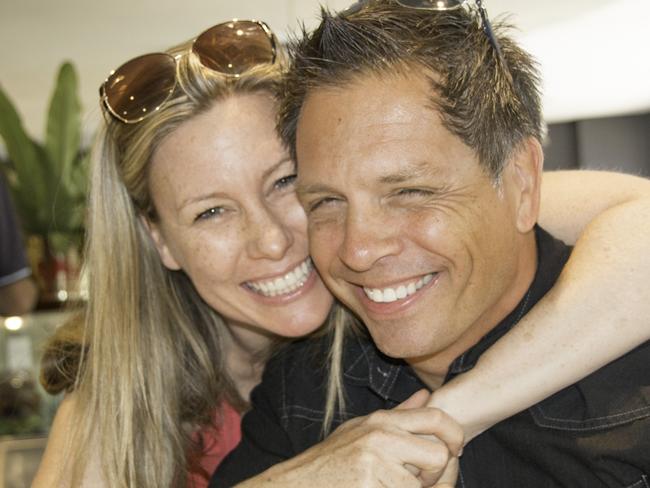Justine Damond case: Jury reaches verdict over death of Australian woman shot by police officer
Mohamed Noor has been found guilty of murder and manslaughter over the shooting death of Aussie woman Justine Damond. But critics say that verdict wouldn’t have been reached if he was white.
Crime in Focus
Don't miss out on the headlines from Crime in Focus. Followed categories will be added to My News.
A US jury has found Mohamed Noor guilty of murder and manslaughter over the shooting death of Australian woman Justine Ruszczyk Damond.
Noor was convicted of third degree murder and second degree manslaughter but was cleared of the more serious charge of second degree murder, which includes “intent to kill”.
The former police officer will be sentenced on June 7 and could face up to 25 years in prison.
Justine’s partner Don Damond was visibly distressed when the verdict was read out. He was seen with his head down wiping away tears with his handkerchief.
A charge of third degree murder means Noor committed an eminently dangerous act that showed a “a depraved mind” and caused Ms Damond’s death.
The charges of second degree manslaughter means the jury found Noor guilty of culpable gross negligence, causing death.


Noor, who has showed barely any emotion during the four week trial, responded calmly when the verdict was read and when sheriffs handcuffed him and led him from the court after his bail was revoked.
As a first offender with no criminal record, Noor will face a sentence at the lower end of the scale. While murder three carries the same maximum sentence as murder two, it differs in that it doesn’t call for an intent to kill. Murder three means he acted without regard for human life.
Race has been a constant undertone in the prosecution of Noor and protesters assembled at the court after the verdict to voice their displeasure.


Ms Damond’s family said they believed justice had been served despite many initial missteps from some Minneapolis police and the state authority that led the investigation, the Bureau of Criminal Apprehension.
At a press conference after the verdict, Mr Damond, who had been due to marry the Australian woman, paid tribute to her legacy and “thanked everyone who has held us in their hearts”.
“This case is about Justine and Justine loved to teach us about love,” Mr Damond said.
“She taught us to love, she taught us joy. She taught us to laugh and she taught us what means to live from the heart.”


Third degree murder carries a median sentence range of 128 to 180 months, and County Attorney Mike Freeman said he expected a sentence of between 150 months for murder, and 48 months for manslaughter, that he believed could be served concurrently.
Noor is the first Minnesota police officer to be found guilty of committing a murder while on duty, and Mr Freeman said he was one of a handful of American officers to be successfully prosecuted. He said over the past 12 years, more than 12,000 police involved shootings had seen only 95 officers charged and less than half of them convicted.
Mr Freeman, who brought the charges against Noor, said he wanted to apologise to Ms Damond’s family for her death. “I want the family to know how sorry we are about what occurred,” he said, as he praised the prosecutors who led the case against Noor.
“This was a challenging case with limited video evidence and only two witnesses to the actual shooting.”


Teenager Dominic Barry, 17, who lived across the road from the Damond’s when the shooting happened, was one of many who said the while they were happy Noor had been convicted, there was a lot more work to do.
“We’re glad that Justine was given fair prosecution, but true justice means justice for all,” he said.
Sarah Kuhnen, from community group Justice for Justine, has sat through every day of the trial and was emotional as she talked about her reaction to the verdict.
“We are thinking of the Damond and Ruszczyk families today. This welcome conviction will not bring Justine back, however, we celebrate that some form of justice has occurred this week,” she said in a statement.
“What we truly need, and what we will continue to fight for is real justice for all victims of police violence
“We have to acknowledge that in our city most victims of police violence are people of colour, and that racism and white supremacy are the reasons they don’t receive the treatment Justine received.
“What Justine has gotten, we want for everyone. If Justine is the only one to be treated this way, that is not real justice.”
‘TRAGEDY ON TOP OF TRAGEDY’
Former police officer Noor, 33, shot Ms Damond after she called police to help a woman she believed she could hear screaming behind her south Minneapolis home on July 15, 2017.
Ms Damond, 40, a former vet who was working as a life-coach, had been planning to marry her American fiance, Don, just weeks later.
Ms Damond’s Australian family, including her father Mr Ruszczyk, stepmother Maryan Heffernan, brother Jason, sister-in-law Katarina and her fiance Don were in court every day of Noor’s trial, which has drawn national and international media attention to the midwestern city.
The 12-person jury of ten men and two women retired on Monday. They had been sequestered and asked to reach a unanimous verdict on all three counts.
Judge Kathryn Quaintance concluded the trial by expressing her sympathies to the families of Noor and Ms Damond, who sat shoulder-to-shoulder in the front row of the public gallery in a cramped courtroom for every day of sometimes graphic evidence and testimony.
“This process must have been just excruciating in many ways,” she said.

In her closing arguments, prosecutor Amy Sweasy described Ms Damond’s death as “tragedy compounded on top of tragedy.”
Noor’s defence argued that he and his partner feared they were being ambushed by Ms Damond, who was barefoot and in pyjamas. They said that when she raised her arm as she approached their car, they believed she was possibly armed.

Noor’s defence lawyer Thomas Plunkett said his client was following his training, and that he was devastated that he had killed an innocent woman and lost his job as a police officer.
Describing Somali-born Noor, a 33-year-old father-of-one, as “a kid that came here from a far away place, grateful to the community for his family’s opportunities”, he said Noor “didn’t wake up in the morning and say ‘I want to kill someone’.”
“Mr Noor acted to stop a threat,” Mr Plunkett said in his closing arguments.
But Ms Sweasy argued: “He knew exactly what he was doing. He pulled his gun out … he aimed and he killed her.
“This was intentional murder.”
The jury was tasked with determining the level of intent and recklessness Noor displayed in firing his Glock service pistol past the chest of his partner, Officer Matthew Harrity, who was driving their car, at Ms Damond. Their options ranged from not guilty to guilty of one or any of the charges.
As a police officer, Noor was authorised to use deadly force if there was an apparent threat of grievous harm or death, and the jury was to decide whether his defence successfully argued that the “totality of circumstances”, which included Noor seeing Ms Damond raise her arm as she approached his squad car, coupled with a loud noise variously described as a thump or slap, met this benchmark.
Originally published as Justine Damond case: Jury reaches verdict over death of Australian woman shot by police officer


